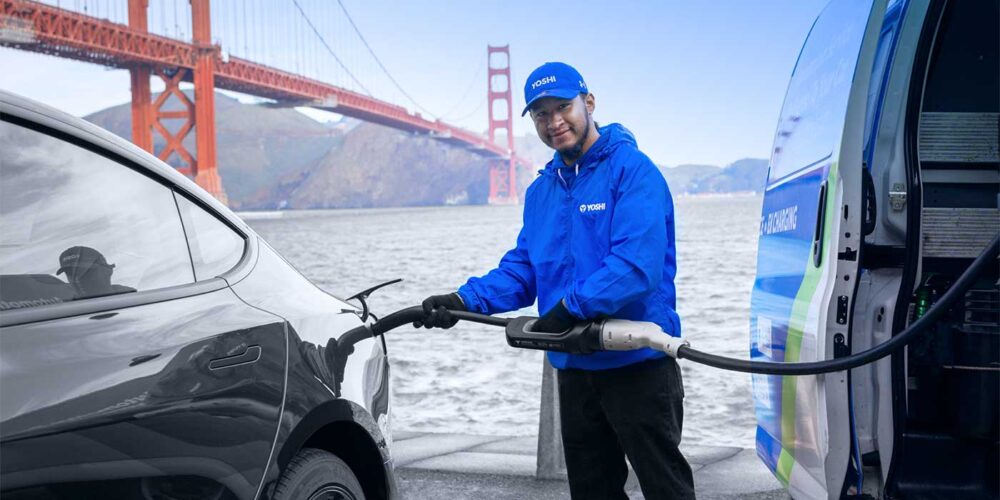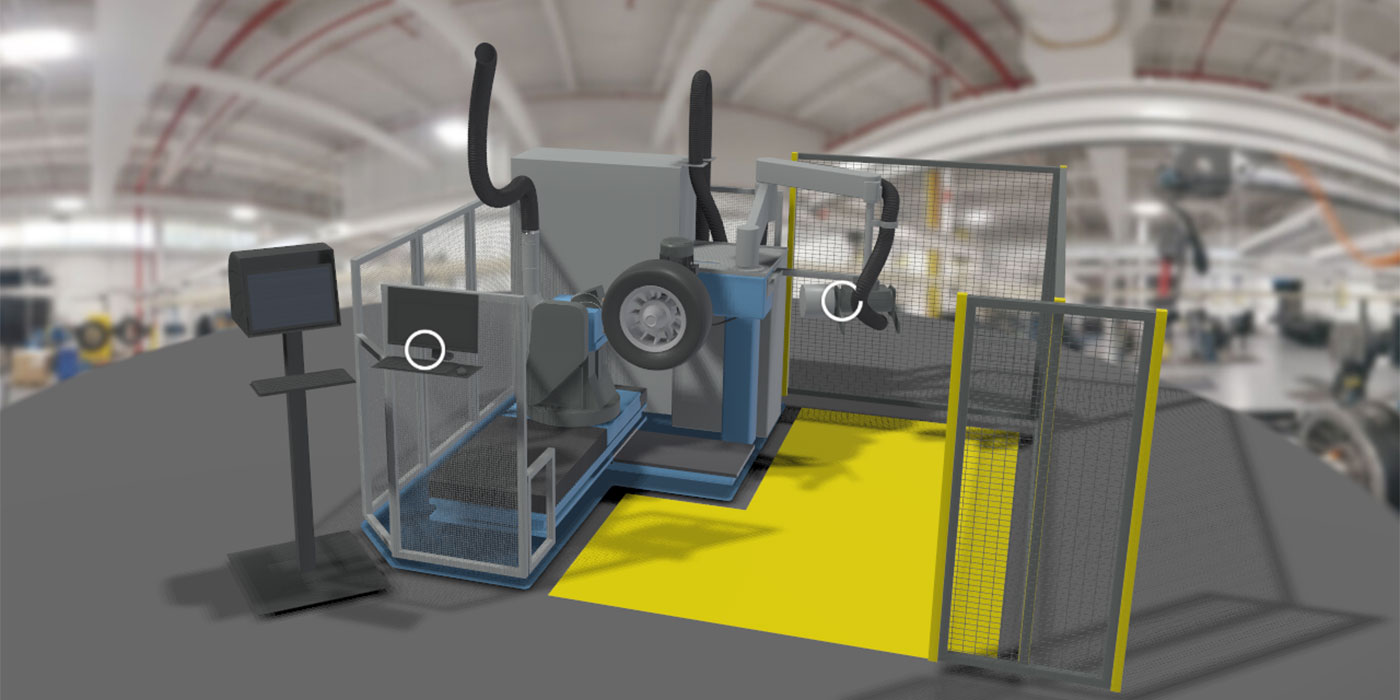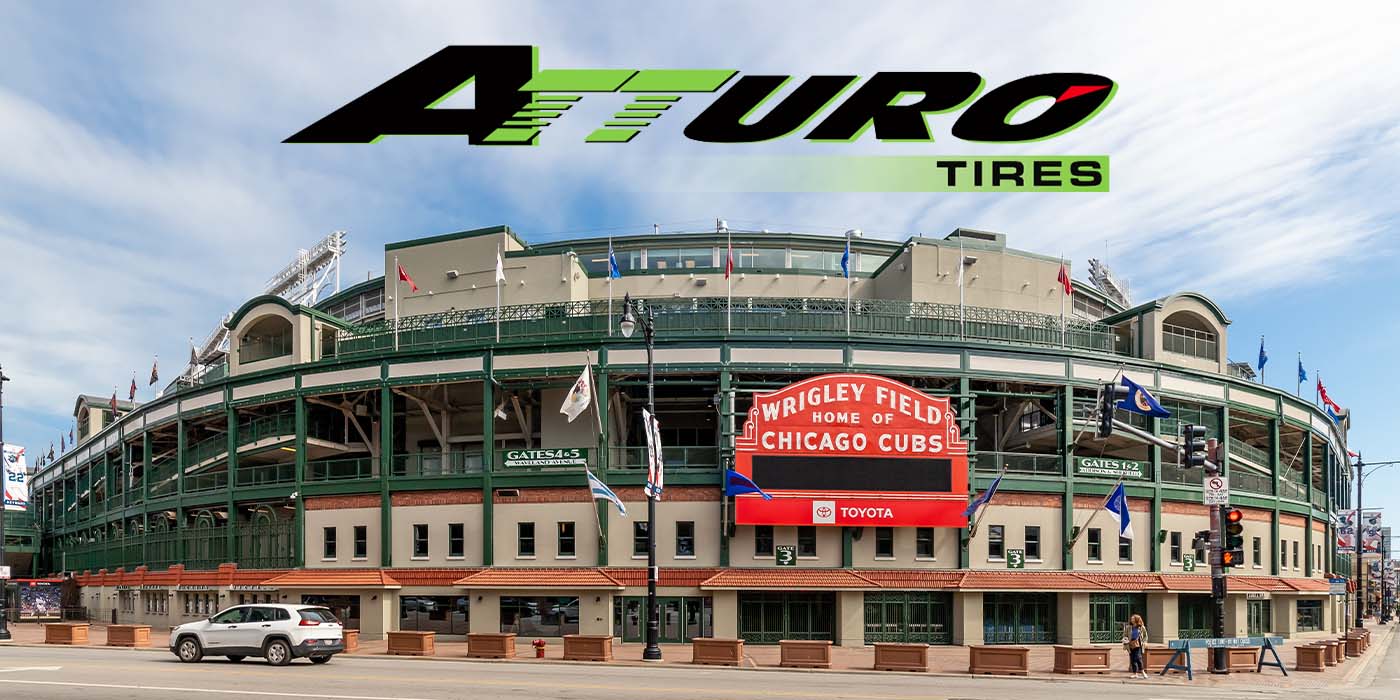While much of the report references hard parts, the report is equally applicable to the tire industry.
The report is published here with the permission of MEMA.
Today’s trend of distributors (*see note below) bypassing brand name manufacturers by importing popular automotive replacement parts has created quite a buzz within the industry. The quest for higher margins and/or lower prices to bring a competitive advantage has more than the major distribution chains and private labelers looking offshore for opportunities.
This phenomenon is heightened by myriad expeditors, Internet Web sites and other import specialists anxious to separate distributors from their money in exchange for a container-load of low-cost products. However, is the low price worth the increased cost, risk and investment associated with direct importing? This important issue bears closer examination.
Why Distributors Directly Import Products
First, it is no secret that many major brand name manufacturers have shifted manufacturing production from domestic plants to lower cost offshore facilities. Some have even migrated from company-owned facilities to outsourcing. So why shouldn’t the distributor bypass the middleman by importing direct?
Next, there is lower cost … a much lower cost. On a per part basis, savings can range from as little as 10% to as much as 50% depending on the category. And even though the products may need to be discounted below their brand name counter parts, they are still priced much less with equivalent or even higher margins bringing a competitive advantage. Again, what’s the problem?
Finally, there is the ease of doing business overseas compared to just a few short years ago. Some companies make direct importing as simple as point and click. Offshore trading offices staffed by U.S.-educated locals make having an import partner possible for any size distributor.
So for these reasons, is it any wonder that more distributors are looking at directly sourcing as an alternative?
The Rest of the Story
Despite the benefits of direct importing there are pitfalls and additional costs that can offset savings on acquisition price. As a distributor moves up the channel of distribution, many additional costs and considerations will be encountered. Plus, there will be value-added services required which have traditionally been provided by the brand name manufacturer.
Product Specification and Engineering
Even though most popular automotive product categories have been knocked off or reverse engineered by offshore manufacturers, there is no assurance of adherence to original specifications on dimensions, materials or performance.
The only way to ensure proper performance is to develop a strict set of product specifications to which the imported products must be manufactured. Many aftermarket manufacturers employ advanced designs, which may improve performance. This will require in-house product management and/or engineering capabilities.
* Note: For the purposes of this report, “distributor” may include warehouse distributors, retail chains, retailers, chain stores, program groups, jobbers and any other company that imports automotive aftermarket parts for direct sales.
Category Management
Many offshore manufacturers specialize in only one make or limited model range. Very few, if any, offer a complete, full range of products in any given category. The result is the need to deal with multiple manufacturers to have a complete range of make/model coverage. Even then, it will usually be limited to only the popular selling parts or 80/20 rule. Category management becomes the responsibility of the direct importer.
Quality Control
Once the product specifications are determined, preproduction samples must be obtained for testing and adherence to specs. An incoming inspection process should be established to ensure each and every shipment is inspected on an ongoing basis for adherence. Many imports require at least a 100 percent visual inspection as inconsistencies may occur. The establishment of ISO certification for incoming inspection provides consistency through process, but is not necessarily a measure of quality.
Product Liability
The United States tort laws provide that any seller of a product, not just the manufacturer, is liable for losses, injury or damage caused by a defective part. An injured party may file suit against the distributor of the product without naming the manufacturer. With products supplied by a name brand manufacturer, the distributor will bring the said manufacturer into the case if the company had not already done so.
However, when the offshore manufacturer does not have a legal presence in the United States, or has not agreed by contract to be subject to jurisdiction of the U.S. courts, then the distributor stands alone in the case. In many cases, even when the offshore supplier signs a contract, the burden to find the manufacturer lies on the distributor. Such businesses often close only to resurface in another city under a new name.
Intellectual Property Protection
The distributor faces greater exposure to claims that a product infringes on the patent rights, trademarks or other intellectual property rights which may be owned by the original manufacturer because the offshore manufacturer may be beyond the reach of U.S. courts. In such cases the distributor or seller of the product may be ultimately responsible for damages caused by intellectual property rights infringement.
Outside legal counsel advice can be helpful to ensure that directly imported products do not infringe on U.S. patents, trademarks or intellectual property rights of others. Legal fees can be an additional expense to be considered.
Product Recall Responsibility
Distributors that import products from abroad are considered by the National Highway Traffic Safety Administration (NHTSA) as statutory manufacturers. NHTSA regulates automotive and heavy-duty aftermarket parts manufacturers and importing distributors of replacement parts in the following ways:
• Compliance, subject to recall, remedy and civil penalties, with federal motor vehicle safety standards for brake hose and fluid, lighting, tires, warning devices, glazing materials, child restraint systems, motorcycle helmets, rear impact guards, compressed natural gas fuel containers and platform lift systems;
• Responsibility for recalls and remedies of importing distributor products containing any safety defect that presents an unreasonable risk of accident, injury or death;
• Monthly submission to NHTSA of bulletins or other communications sent to more than one purchaser involving any defect in the products, regardless of whether safety-related;
• Monthly submission to NHTSA of customer satisfaction, consumer advisory or related communications to more than one purchaser involving repair or replacement of products;
• Submission to NHTSA of documentation involving fatality claims involving imported products for the current calendar year and the preceding four calendar years;
• Submission to NHTSA of any report of a safety recall conducted on the part in any foreign country, whether conducted voluntarily or as required by a foreign government;
• Submission to NHTSA within five business days of any “safety related campaign” conducted in any country.
All importers, including distributors that import parts, may be assessed monetary penalties if the products are improperly imported.
Importer of Record
The importer of record is the actual buying entity in the United States receiving products from an offshore source. In this case, the distributor or retailer involved in direct importing. In this role, the burden of any taxes, duties, handling fees, tariffs or other charges may become the responsibility of the importer of record, even if the product first makes a stop in another country, and can be retroactive.
For example, tapered roller bearings produced in China are subject to dumping duties. If the bearing is shipped to Canada first and later sold into the United States, it is still subject to any applicable duties by the company or individual purchasing bringing it into this country for the first time. Tapered roller bearings are subject to duties of up to 60%.
Longer Lead Times
Unless smaller lot quantities of products are purchased through Internet sources, longer lead times should be expected when dealing with an offshore manufacturer. Due to the nature of a manufacturing facility having no finished goods on hand and the proximity of offshore locations, lead times will be substantially longer than those of brand name manufacturers that have a U.S. base of operations.
Not only are the lead times to manufacture the product from scratch a consideration but raw material lead times as well as extensive shipping times customarily by ship, are much longer then domestic freight carriers. Just-in-time inventory is not an option. Lead times of 180 days are considered the norm and may be longer.
Supply Chain Management
Longer lead times are not the only concern in managing a long-distance supply change – some times as much as 8,000 miles. Inflexibility in the supply chain makes unexpected fluctuations in market conditions difficult to manage. Shipments “on the water” usually cannot be cancelled due to market slowdowns.
Likewise, spikes in demand are as difficult to manage. A long-distance supply chain can impact the entire global aftermarket and lose customers.
Increased Inventory Costs
Because of the longer lead times, higher inventory levels and carrying costs must be considered. Additionally, direct imports generally require substantial quantity buys of single part numbers to justify manufacturing runs. Offshore shipments are usually by the container load for optimum freight and space utilizations. Pallet-load quantities of single SKUs and subsequent rack storage must be taken into account.
Offshore suppliers generally do not provide payment terms. In fact, many may require a deposit or full payment in advance. In addition, inventory balancing or annual stock adjustments usually are not offered.
Application Knowledge and Technical Support
Most short line suppliers and even distributors that directly import the popular part numbers depend on the brand name manufacturers’ part numbering systems and application catalogs to dispense parts.
However, some manufacturers have trademarked or copyrighted proprietary part numbers. Even if a part number is not trademarked or copyrighted, there is a common law right not to have someone else use the mark inappropriately.
It may be permissible to use someone else’s part number by cross-referencing to it. However, it is never permissible to state or imply to the consumer that the part has been manufactured by someone else, and the deceptive use of part numbers can easily lead to such charges. Lawsuits have been won which prohibited an infringing supplier from using the original brand name manufacturer’s part number. Most manufacturers copyright application catalogs, even if they appear in an electronic format. This copyright protection is very serious and enforceable in a court of law.
Many brand name manufacturers to date have looked the other way when loyal distributors cannibalize their lines with so-called value line products. In some cases, it is because the name brand manufacturer also supplies a value line alternative to its own products. However, as the tides may change and a significant of sales may shift to products directly imported, the manufacturer may have no alternative than to discontinue the value-added service of application catalogs or find the need to charge for this service to recover the expense and investment. In any event, a distributor choosing to directly import must consider this risk.
In addition to the potential staffs of application researchers and catalog writers, the harsh reality is that technical inquiries and phone calls begin right away. When a repair professional requires technical assistance in parts identification, proper installation techniques or when a part has failed, the call comes to the distributor that imported and sold the product, not the name brand manufacturer that lost the sale.
Defective Product and Labor Claims
Most distributors have a designated area in their warehouse for alleged defective products. In most businesses this has become a substantial rack storage system of “coffin” crates to house the large quantity of products claiming to be defective. While a substantial expense, the burden and ultimate cost usually lies on the name brand manufacturer that supplied the parts.
Managing alleged defects has led to many major distributors negotiating a defect allowance in lieu of handling. Yet others have found that the allowance does not adequately cover the higher rate of returns experienced on certain lines.
Regardless of which school of thought a distributor chooses when it comes to direct imports, the buck stops with them. If you think a boatload of products is expensive to ship, imagine a boat load of alleged defective products on its way back – assuming the offshore manufacturer agrees to returns, which is highly unlikely … Who pays for that?
Labor claims are quite a different story. Most brand name manufacturers have staffs of product managers, engineers and even testing labs for the processing of potential labor claims. Nuisance or not, they keep coming and just like frivolous lawsuits, each must be defended. A distributor considering direct imports must consider who will process and analyze these claims.
Sales and Profit Erosion
Lower prices and higher margins are great temptations for a distributor to import products themselves. So how does that relate to sales and profit erosion?
For example, if an imported product costs the distributor 25% less than a name brand product and is sold at a 25% gross margin, the distributor must sell 33.3% more product to equal the same gross profit dollars.
A few distributors may claim to be able to charge name brand prices for direct imported products and make a higher gross margin – which can be a risky strategy. A customer may price shop an item and discover a name brand product selling for the same price elsewhere.
Value-Added Services
The following is merely an example of some of the value-added services offered by AASA members.
Each manufacturer’s value-added services may vary and the cost associated may vary as well. But each should be weighed. Then, and only then, a decision can be made intelligently. It is very likely that any additional discount could be offset by the implied value of an AASA member’s services or the loss of gross profit through lower sales dollars.
Value-added services may include:
• Sales representation
• Inventory adjustments
• Fill rate 95%/3-day turn around
• 30 day terms versus cash in advance
• DC capable shipments
• Electronic advance shipping notice (ASN)
• Special order capable
• Marketing programs
• Program group support
• Electronic catalog
• Market knowledge
• Electronic business – order entry / payment
• Local supply chain
• Product specification & engineering
• Category management – full product range
• Quality control
• Product liability protection
• Intellectual property protection
• Product recall protection
• Cost of inventory (lower lead times)
• Application research / catalog
• Technical support
• Warranty – alleged defects and labor claims
• Brand recognition
Industry Image
Perhaps the greatest risk of all is the potential of irreparable damage to the automotive aftermarket industry as a whole. While many things threaten the future of the independent aftermarket including where tomorrow’s technicians will come from, will they have the training necessary to do the repairs or even the impact of longer warranties which drive the car owner back to the dealer; none offers as much of a threat as a tarnished image. If the only place a professional repair facility can be assured of a name brand part is the OE dealer, then that is where they will buy their parts. If not now, eventually it will happen if the technicians want to do the job right the first time.
Some distributors say the directly imported products perform as well as the name brand counterpart. In some cases, that may well be true but not in every case. Is it product testing, metallurgy analysis or engineering specifications that support the contention that imports work as well as name brand parts? No.
It is usually unfounded or because the direct imported product has not been returned or has a low rate of return. In the case of a low return rate, is it due to quality or is it because the customer gave up on the import and went to a name brand supplier instead?
Conclusion
So what is a distributor or retailer to do? While name brand manufacturers are moving production offshore and the temptation of a lower price will most assuredly always exist, the only real solution is to weigh all the costs associated and decide. Some of the risks can be mitigated through investment.
However, those investments have already been made by the brand name manufacturers of the Automotive Aftermarket Suppliers Association (AASA).
Where a part is made is not the determining factor of a product’s quality. Who develops and stands behind that product is. The manufacturers of AASA have invested in all of the above and much more. In addition to the responsibilities of a manufacturer outlined here, the AASA member offers a full range of value-added services. Each of these value-added services must be taken into account or quantified before choosing direct import as an alternative.















